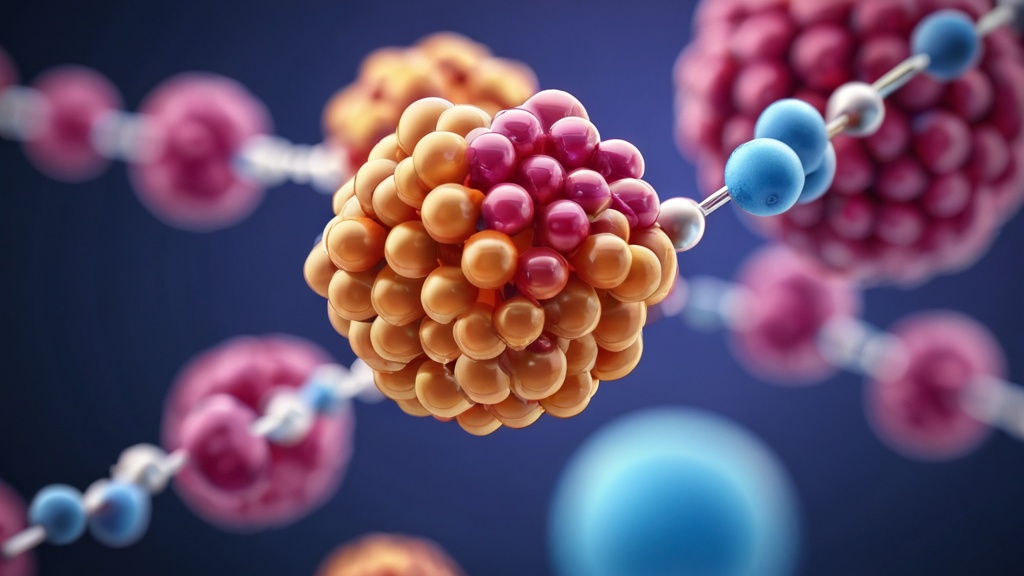Peptides and proteins play crucial roles in biological processes. Both are essential for various functions in the body, yet they differ significantly. Understanding these differences can help you make informed choices about nutrition and supplementation.
In recent years, interest in peptides has surged. Many people seek to harness their benefits for health and wellness. Meanwhile, proteins remain a staple in diets worldwide.
This article will explore the distinctions between peptides and proteins, highlighting their structures, functions, and applications.
Key Takeaways
- Peptides are smaller chains of amino acids, while proteins are larger and more complex molecules made up of one or more polypeptide chains.
- Peptides typically consist of 2-50 amino acids, while proteins are composed of 50 or more amino acids.
- Peptides and proteins play crucial roles in the body, such as serving as signaling molecules, enzymes, and structural components.
- Peptides can be derived from natural sources like plants and animals, as well as produced synthetically in laboratories, while proteins are commonly found in foods like meat, dairy, and legumes.
- Peptides are often more cost-effective and accessible than proteins, making them a popular choice for various applications in medicine and cosmetics.
Definition and Structure of Peptides
Peptides are short chains of amino acids linked by peptide bonds. Typically, they consist of 2 to 50 amino acids. Their smaller size allows them to perform specific functions in the body.
The structure of peptides can vary widely. Some peptides form simple linear chains, while others may adopt complex three-dimensional shapes. This structural diversity contributes to their unique biological activities.
Definition and Structure of Proteins

Proteins are larger molecules made up of one or more long chains of amino acids. They usually contain 50 or more amino acids, forming intricate structures. These structures enable proteins to perform a vast array of functions.
Proteins can be globular or fibrous in shape. Globular proteins often function as enzymes or hormones, while fibrous proteins provide structural support. The complexity of protein structures allows for their diverse roles in living organisms.
Differences in Size and Length
One of the most significant differences between peptides and proteins is their size. Peptides are much shorter than proteins, which can be thousands of amino acids long. This size difference influences their functions and interactions within the body.
The length of a peptide or protein affects its stability and solubility. Shorter peptides may be more easily absorbed, while longer proteins may require more complex digestion processes. Understanding these differences is essential for optimizing nutrient intake.
Function and Role in the Body
Peptides serve various functions in the body, including signaling and regulation. They can act as hormones, neurotransmitters, or immune modulators. Their specific roles depend on their amino acid sequences and structures.
Proteins also play vital roles in the body. They serve as enzymes, transport molecules, and structural components of cells. The diverse functions of proteins highlight their importance in maintaining overall health and well-being.
Sources and Production

Peptides can be derived from dietary sources or synthesized in laboratories. Foods rich in protein, such as meat, fish, and dairy, provide the building blocks for peptide formation. Additionally, some peptides are produced through enzymatic digestion of proteins.
Proteins are abundant in various food sources as well. Animal products like eggs and legumes provide high-quality protein options. Plant-based sources also offer protein, though they may lack some essential amino acids.
Bioavailability and Absorption
Bioavailability refers to how well a substance is absorbed and utilized by the body. Peptides often exhibit higher bioavailability than proteins due to their smaller size. This characteristic allows them to be absorbed more efficiently through the intestinal lining.
Proteins require more extensive digestion before absorption. Enzymes break down proteins into smaller peptides and amino acids. This process can limit the speed at which proteins enter the bloodstream compared to peptides.
Applications in Medicine and Cosmetics
Peptides have gained popularity in medical research and cosmetic applications. In medicine, they show promise for treating various conditions, including diabetes and obesity. Their ability to mimic hormones or modulate biological processes makes them valuable therapeutic agents.
In cosmetics, peptides are often included in skincare products for their anti-aging properties. They can stimulate collagen production and improve skin elasticity. This application highlights the versatility of peptides beyond traditional nutritional roles.
Stability and Shelf Life
Stability is an important factor when considering peptides and proteins. Peptides tend to be less stable than proteins due to their shorter chains. Environmental factors like temperature and pH can affect their integrity over time.
Proteins generally exhibit greater stability under various conditions. However, they can still denature when exposed to extreme heat or acidic environments. Understanding stability helps ensure the effectiveness of supplements and food products.
Cost and Accessibility
Cost can vary significantly between peptides and proteins. Peptide supplements often come at a higher price due to their complex production processes. This cost may limit accessibility for some individuals seeking these benefits.
On the other hand, protein sources are widely available and often more affordable. Many people can easily incorporate protein-rich foods into their diets without breaking the bank. This accessibility makes protein a popular choice for those looking to enhance their nutrition.
Choosing the Right Option for Your Needs
When deciding between peptides and proteins, consider your specific needs and goals. If you seek quick absorption and targeted effects, peptides may be beneficial. However, if you want a broader range of nutrients, protein-rich foods might be the better option.
Ultimately, both peptides and proteins have unique advantages. Understanding their differences allows you to make informed choices about your health and wellness journey. Whether you choose peptides or proteins, prioritize a balanced diet for optimal results.

